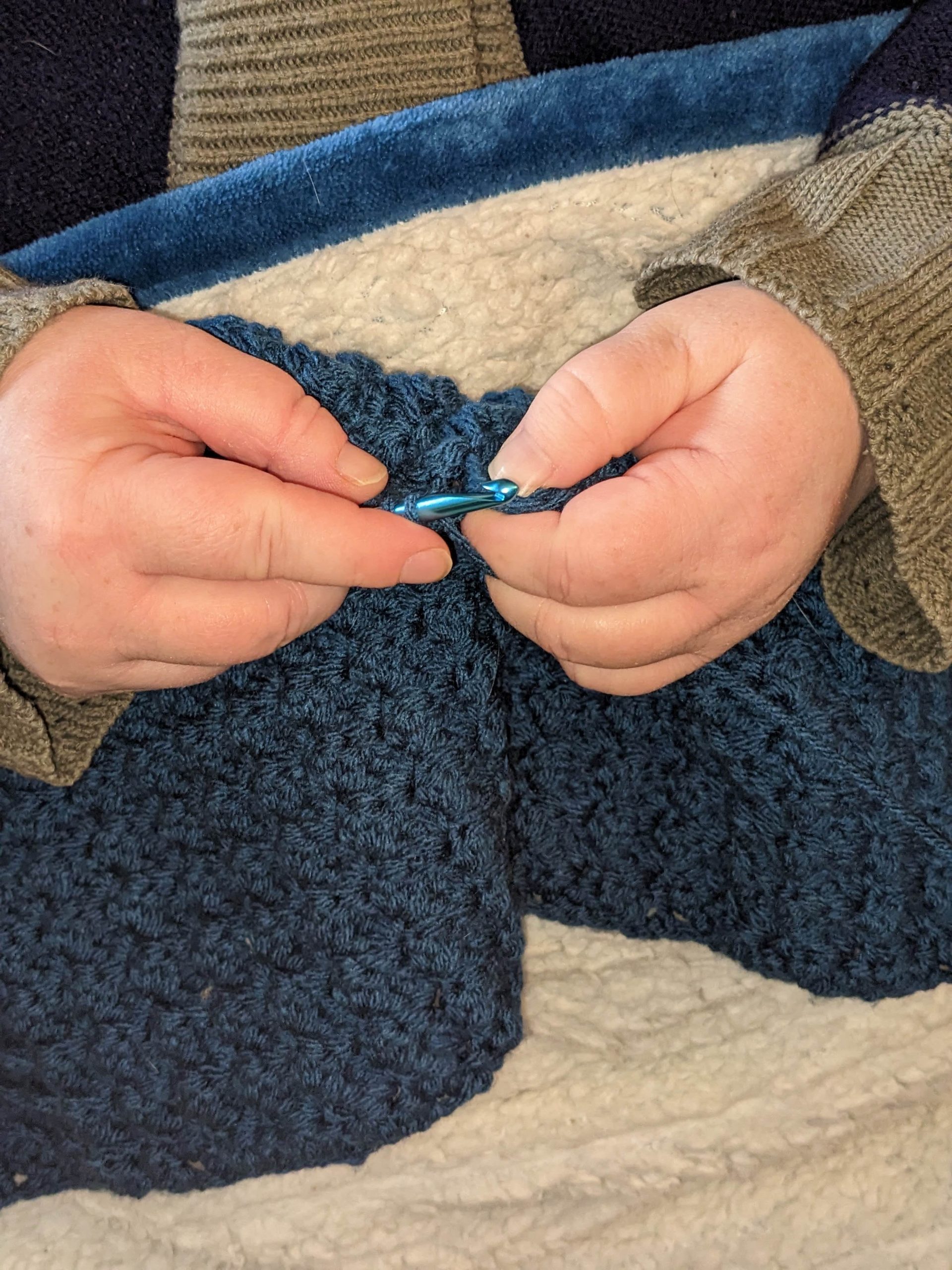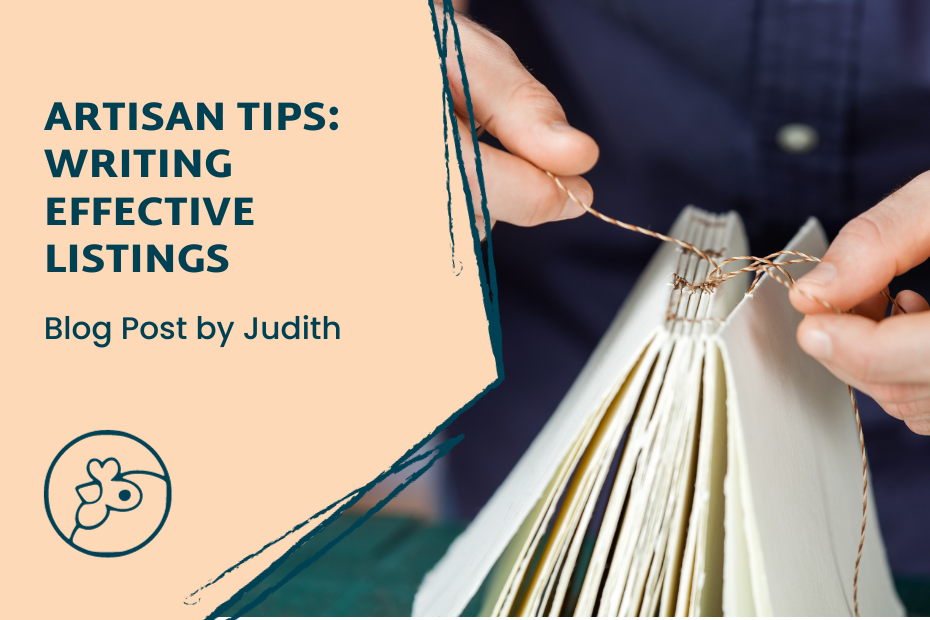Tips for Writing Effective Listings
So many choices, so little time! Online shoppers have to make instant decisions about which items to click on and may spend only a few seconds on each one. They’ll rarely bother to message a seller with questions when it’s so easy to move on to another listing or site.
In this guide we’d like to help you anticipate shoppers’ questions and present information about your product in ways that busy shoppers can take in. By thinking like a buyer, you can create listings that have all the information buyers need to make a confident purchase. Clear, appropriately detailed listings are not the whole story, but they’ll impress shoppers and also reduce the likelihood of returns.
Question 1: How big is it?
Shoppers will want to know if your product will meet their size needs. Give its full dimensions, include a size guide if necessary, and make this information easy to find. Some sellers put it in the photos as well as the text–for example, displaying items next to rulers or annotating photos.
Question 2: Um, what are centimeters?
If you’re selling to countries other than your own, it’s a good idea to give product measurements in both US and metric numbers. It’s easy: just do a quick internet search for “inches to cm,” etc. to find free instant converters.
Question 3: What does it look like When I Receive It?
Answer this question by including photos and videos that show how your product looks from different angles and distances.
Packaging is also very important to customers these days. If your product features beautiful packaging, include a picture or description of it! Will it arrive nice enough to gift, or do you offer gift wrapping?
Question 4: What is it made of?
There are loads of reasons why shoppers might need to know your item’s materials, from allergies to matching other items they own to judging quality and price. With experience, artisans get to know the questions buyers tend to have about materials. If you’re a newbie, check out how other artisans in your field describe and show their materials.
Question 5: How Many? Which one? I’m confused!
A great practice is to proof your listing details for consistency before finalizing it. Write for a busy shopper who only has 15 seconds to decide if your product is a contender. Let them know exactly what, how many, and for how much the listing is selling, in a way that’s clear and easy to see:
- Are the title, description, and drop-down variant menus (for options such as size and color) all consistent about exactly what you’re selling, including quantity and price?
- If one of your sizes, colors, etc. is sold out, have you removed it from the variants and description?
- In your listing photos, will the what, the how many and the for how much be clear to the shopper? For example, if your first photo shows five rings, is it clear that the price is for only one? If some of your listing’s variants have sold out, have you removed their photos?
Question 6: Was This “Not as described”?
Ouch! As an artisan, getting a message from the customer about product flaws and returns can be upsetting. Returns take time, and they’re expensive, especially with big retailers increasingly leading buyers to expect “free” (i.e., seller-paid) returns.
Not only that, but when customers feel like they received something “‘not as described” they will expect and demand a lot more concessions. If the disagreement escalates, the writing in your product description can even help determine whether a credit card chargeback is granted by payment processors, forcing a full refund.
To help ward them off, be honest about product condition:
- Disclose noticeable flaws
- Note when the item pictured is not the exact item being shipped, such as items made in batches
- Discuss inherent variations in natural material or handmade character, particularly with color
This does not have to be done in a negative way. Frame the issue in a story: as the characterful uniqueness of handmade, the diversity of natural materials.
Disclosing these details is an opportunity to showcase your expertise and honesty. It also shows that you respect the buyer’s right to make an informed decision. Buyers may not know that natural materials may be prone to scars and mars, that small-batch making processes can produce colors that vary from batch to batch, or that some artisans have intentionally “messy” styles. You can explain features like these briefly. Shoppers will gain a better understanding of your craft and, with appropriate expectations, they’ll appreciate your work more.
Question 7: How Do I Care For It?
It’s reasonable for a buyer to want their purchase to look good for a long time. However, they may not know that this can require some effort on their side. You can help them understand this by including brief, simple care instructions in your listings (and maybe also with the orders you send out!).
Buyers will appreciate the information. This way they’ll know how to prevent their sweater shrinking, or what to do when their rings begin to oxidize – and you’ve taken another step to prevent unnecessary returns.
Question 8: How Will your product make me happy?
This is the last question but it’s fundamental. Simply put, buying works of human hands, as opposed to flimsy factory goods, enriches our lives. Who doesn’t want that?
If your listing can tap into this desire, it will make a deeper impact on busy shoppers. There’s no one way to do that – every seller and every product is different – but here are some possibilities:
- Telling a story: it’s a great way to ease into a product description. You can talk about what led you to make it, or how a customer (“you”) might use it, who they might buy it for, and for what occasion.
- Solving a problem: how does this product solve a problem in their lives?
- Sharing the steps of the making process
- Personalization and custom/bespoke work
- Using “I” and “you” language
- Beautiful photos
- Describing your materials and what’s special about them
- Who will appreciate this product as a gift, why, and for what occasion?
- What values or ethics do you have in common: does this product further a common mission, such as environmental sustainability or supporting a community?
These are all ways of communicating the value of handmade. It doesn’t have to be artificial or take a lot of space. It’s about letting your soul show a little so the buyer can experience a genuine connection with you and your work.

About Artisans Cooperative
We are growing an online handmade marketplace for an inclusive network of creatives: a co-op alternative to Etsy.
Shop the marketplace!
